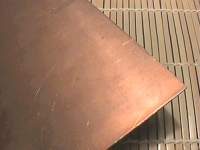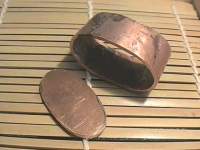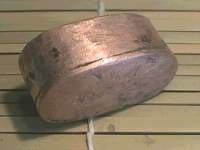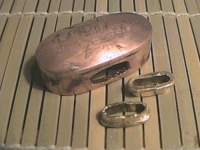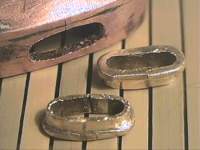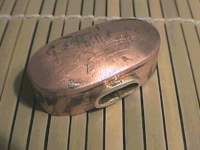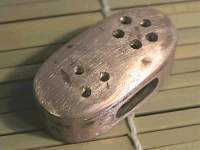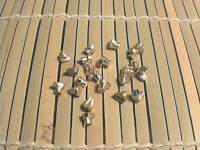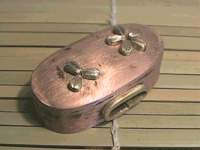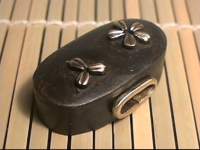The material of the Kashira and Fuchi is 1 mm thick copper. It can be processed well and dyed afterwards black.
The ornaments and the Tsukaito holes are made of brass.
A copper ring is bent and soldered. Its interior cross section corresponds to the end of the handle.
A suitable oval plate is cut out, hammered slightly convex and is soldered to the opening of the ring.
The finished soldered Kashira has to be filed to the correct height. Here the ring is still too broad. Then the holes for the Shitodome will be drilled.
The Shitodome rings are made of brass.
They are 2 mm strong flat-pressed rings, which were bent from appropriate stripes.
These longlish rings are thinner on one side to be inserted in the holes. The thicker side prevents the Shitodome from falling inwards.
The Kashira with Shitodome but sill without ornaments.
Then you drill holes in the top side of the Kashira. Into these the brass petals will be soldered.
Petals are made of a 3 mm thick brass rod.
The round rod has to be filed triangular. Then the part of the petal, which is soldered into the Kashira, is filed round again, so that it fits into the Kashira holes. The petals are decorated with a notch to immitate a leave vein on the top side. If done you can saw it off and start with the next petal.
The finished Kashira has to be dyed black using a oxyde stain.
The finished black Kashira
Unfortunately the black layer was not resistant enough, therefore I laquered the fittings with a fast drying matt blacksmith lacquer.
